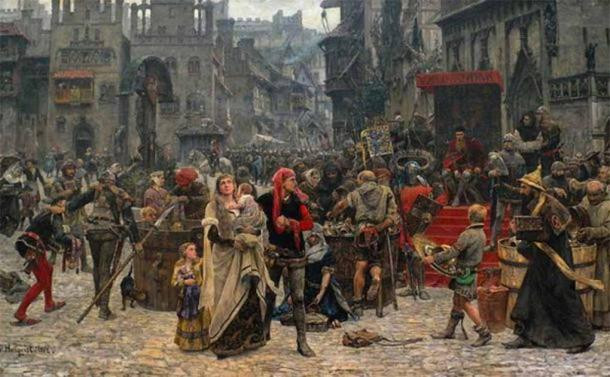The island of Gotland, situated in the Baltic Sea off the Swedish coast, held a crucial position in the intricate network of trade routes connecting Europe and Russia during the medieval era. The city of Visby, located on Gotland, transformed into a bustling center of commerce and cultural interchange.

Visby’s Membership in the Hanseatic League
In the late 13th century, Visby joined the prestigious Hanseatic League, an alliance of merchant towns spanning Northwestern and Central Europe. The league served as a defensive and protective force, safeguarding the interests and security of its member cities.
The Danish King’s Ambitions
Valdemar IV’s Discontent
As the influence of the Hanseatic League grew, it began to unsettle certain rulers, including Valdemar IV, the King of Denmark. Valdemar grew discontented with what he perceived as the league’s encroachment on his kingdom’s trade interests and coveted the wealth accumulated by its member towns.
Visby’s Decline and Valdemar’s Personal Animosity
By the mid-14th century, Visby experienced a decline as a prominent trading hub despite its continued affiliation with the Hanseatic League. Rumors circulated that the people of Visby openly mocked the Danish king through derisive drinking songs, further fueling Valdemar’s personal animosity towards them.
The Battle of Visby
The Danish Invasion
In the summer of 1361, a formidable Danish army, comprising approximately 2,000 to 2,500 soldiers, embarked on a journey to conquer Gotland. The people of Visby, numbering around 2,000 mostly untrained militiamen, had received advance warning and made preparations to defend their homeland.

The Clash Outside Visby’s Walls
The initial attempt by the Gotlanders to impede the Danish advance at Mästerby proved futile. The victorious Danes pressed on toward Visby, and the battle unfolded just outside the town’s protective walls. Although the militiamen fought valiantly, they were outmatched by the professional Danish army, leading to the majority of the defenders meeting their demise.

The Aftermath and Archaeological Discoveries
The Danish invasion and the Battle of Visby marked a turning point in the fate of the town and its inhabitants. Those who fell during the battle were buried in several mass graves and left undisturbed until the 20th century. Between 1905 and 1928, the mass graves were discovered and excavated, unearthing more than 1,100 human remains. These findings provided archaeologists with a wealth of information about the brutal medieval conflict.

